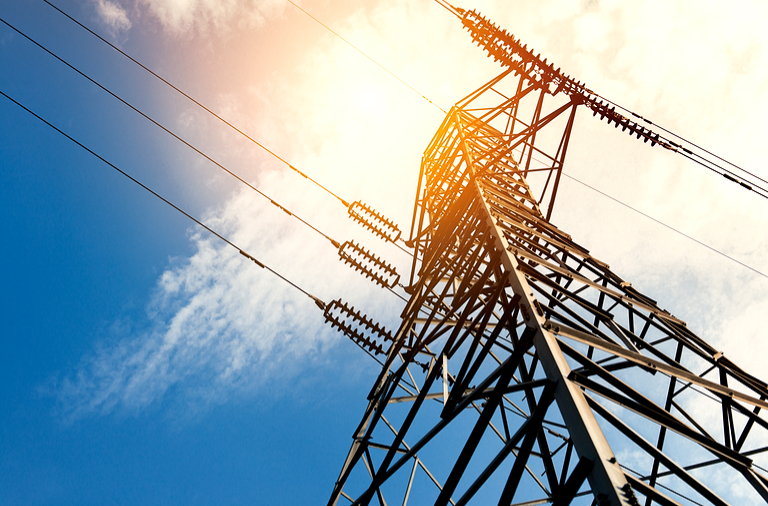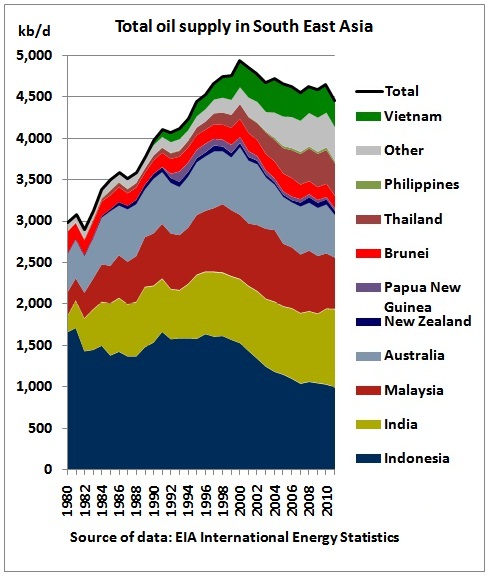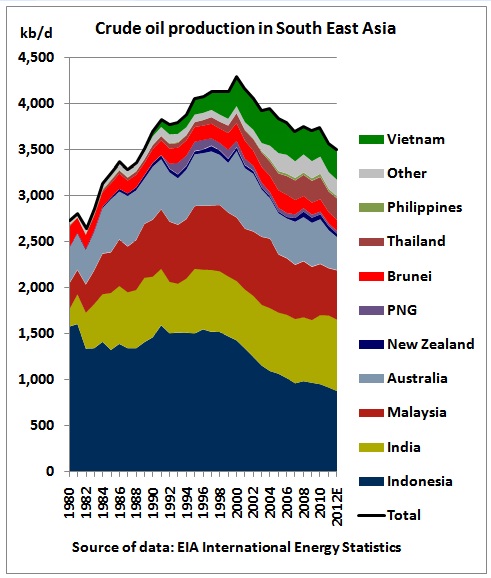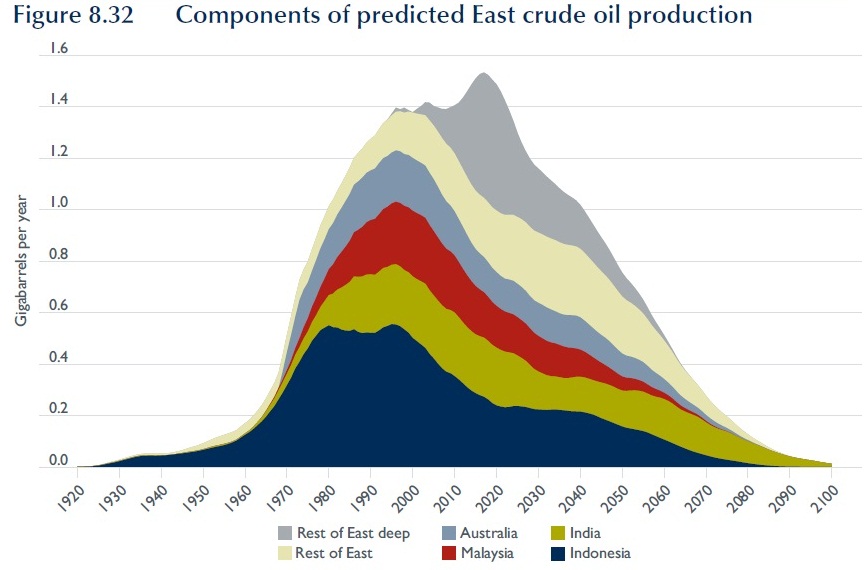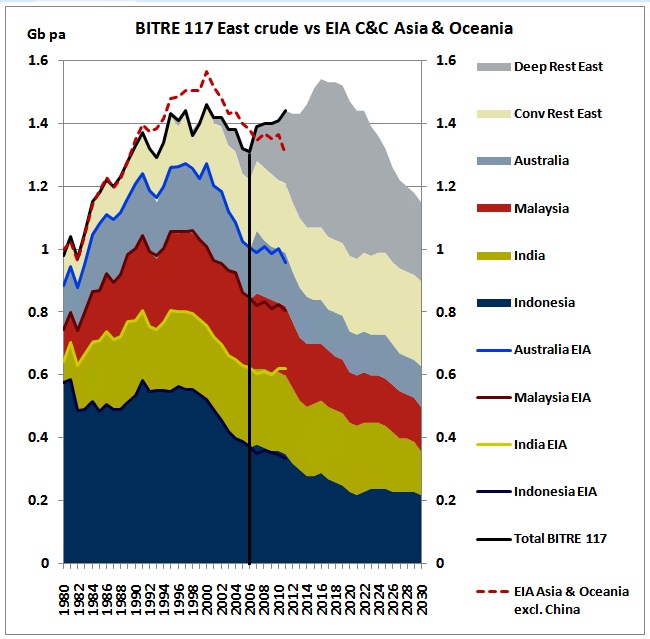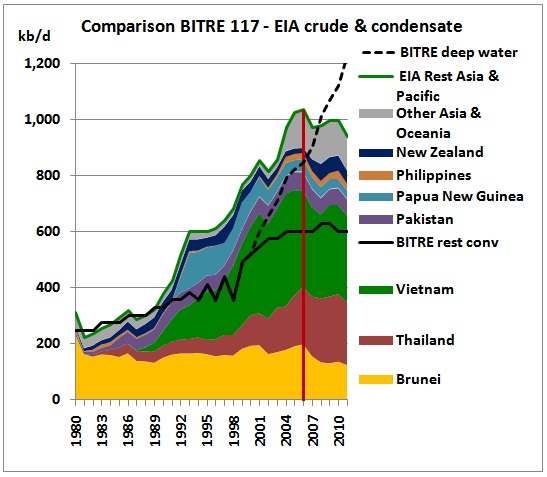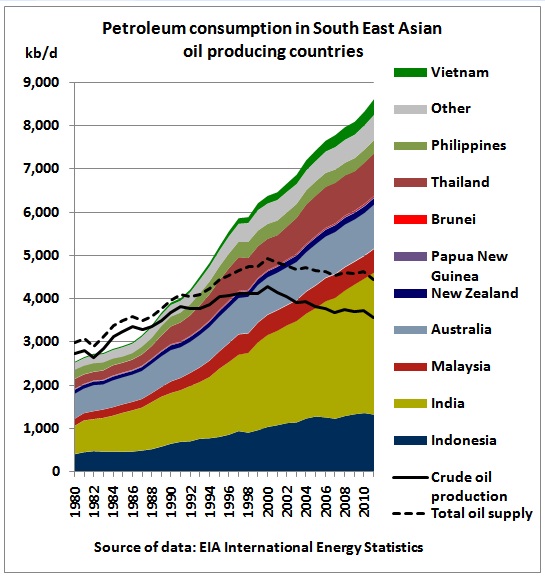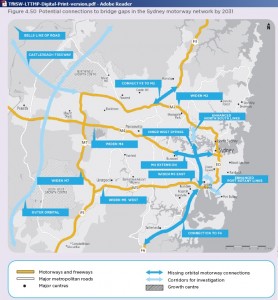The title of this post refers to a term first used by the late Matt Simmons (2005 book “The coming Saudi oil shock and the world economy”)
Grandiose statements about the “Asian Century”[i] are now being followed by warnings that the days of rivers of gold from China are over.[ii] Economic growth needs growing quantities of oil. Where will it come from? Not from South East Asia which peaked in 2000 as will be shown in this article.
(1) EIA oil supply data
Total oil supply is production of crude oil & condensate, natural gas plant liquids and refinery processing gains. The decline after the peak in 2000 was around 500 kb/d (or 10%), equivalent to the total Australian production. All data are from here: http://www.eia.gov/cfapps/ipdbproject/iedindex3.cfm?
(2) EIA crude oil data
For a comparison with past projections of future crude oil production we need the same type of graph, but for crude oil only.
We see that South East Asia crude production also peaked in 2000 and declined since then by around 800 kb/d (-18%) or -1.5% pa (year 2012 is estimated based on Jan-May data).
(3) Crude oil projection from BITRE 117 for Asia
So how will this decline continue?
The Australian federal government calculated crude oil supplies for the “East” in chapter 8 of its BITRE 117 report in March 2009, using actual production data up to and including 2006
This graph (excluding China) shows a flat peak of conventional crude in the 1st decade of this Asian Century, followed by a deep water peak in the 2nd decade.
More details about the BITRE 117 report can be found in this article:
24/2/2012
Australian Government kicks own goals in Senate peak oil debate (peaky leaks part 3)
http://crudeoilpeak.info/australian-government-kicks-own-goals-in-senate-peak-oil-debate-peaky-leaks-part-3
So 5 years into the projection period, let’s have a look where we are by comparing the BITRE 117 projection with actual EIA data.
For this purpose we use BITRE’s raw production data, not the 5 year smoothed data underlying Fig 8.32 because EIA data are on an annual basis and not smoothed.
The vertical line shows where the BITRE projection started. We see that projections for Indonesia, India, Malaysia and Australia were very good, with a post-peak decline rate of -1.8% pa or a total of -25% by 2011. BITRE defines the “rest” of countries on page 222 to include “Brunei, Vietnam, Thailand, Pakistan, and Papua New Guinea.” When adding EIA crude oil data for these countries and other countries included under “Asia and Oceania” (excluding China), actual EIA production before 2006 was higher than used in the BITRE report. But after 2006, actual production intersects the projection curve and continues with a downward trend of -1.5% or a total of -20% since the peak of 2000. It seems the deep water peak (dark grey area) isn’t happening.
Let’s zoom into the upper part of the graph to see details of the “rest” group of countries.
The actual crude and condensate production is shown in the stacked, colored areas with Brunei, Thailand and Vietnam providing 2/3 of the production. Superimposed are curves representing BITRE 117 data from Fig 8.6, column “Conv rest East”, and “Deep rest East” (stacked dotted line). While actual crude production has declined by around 10% since its peak in 2006, we see that the projected total goes into a completely different direction.
(4) Comparison with petroleum consumption
The growing gap between declining oil supplies and growing consumption can be clearly seen. While oil supplies declined by 10% over the last 10 years, consumption went up by 35%, requiring increasing imports.
(5) Impacts in Australia so far
5.1 Qantas moves hub from Singapore to Dubai as jet fuel supply there is assumed to be more reliable (provided there is no oil war)
5.2 Sydney’s Shell refinery is closing this month
13/4/2011
Australia’s fuel import vulnerability increases as Sydney’s Clyde refinery is closing
http://crudeoilpeak.info/australias-fuel-import-vulnerability-increases-as-sydneys-clyde-refinery-is-closing
5.3 Sydney’s Caltex refinery will close in 2014
27/7/2012 After Sydney’s refinery closure: Caltex to import fuel from Chevron’s shrinking sales
http://crudeoilpeak.info/after-sydney-refinery-closure-caltex-to-import-fuel-from-chevrons-shrinking-sales
5.4 BHP shelves Olympic Dam mine expansion due i.a. high diesel prices for removal of huge quantities of overburden
24/8/2012 BHP Billiton’s Australian oil reserves in long term decline
http://crudeoilpeak.info/bhp-billitons-australian-oil-reserves-in-decline
5.5 High diesel prices also impact on trucking companies because governments fail to implement a pro-active transition to gas as transport fuel
6/5/2012 Howard’s wrong decisions on offshore gas exports start to hit transport sector now
http://crudeoilpeak.info/howards-wrong-decisions-on-offshore-gas-exports-start-to-hit-transport-sector-now
(6) Epilogue – Sydney motorway planning continues without oil and energy calculations
The NSW government remains undisturbed and unimpressed by any oil supply calculations as shown above. While writing this article Sydney planners have released a 370 page draft transport master plan. The document shows the VAMPIRE oil vulnerability map in chapter 8 (p 283) but then proposes many new motorway and road tunnel projects called “missing links”, costing billions of dollars.
http://haveyoursay.nsw.gov.au/transportmasterplan
The NSW government will be connected to reality much earlier than the theoretical planning horizon of 2031, when the world economy will be in a deep oil and global warming crisis.
Conclusion:
All things being equal, the Asian Century will last as long as oil imports can be increased. Future posts will analyse the chances of this happening.


